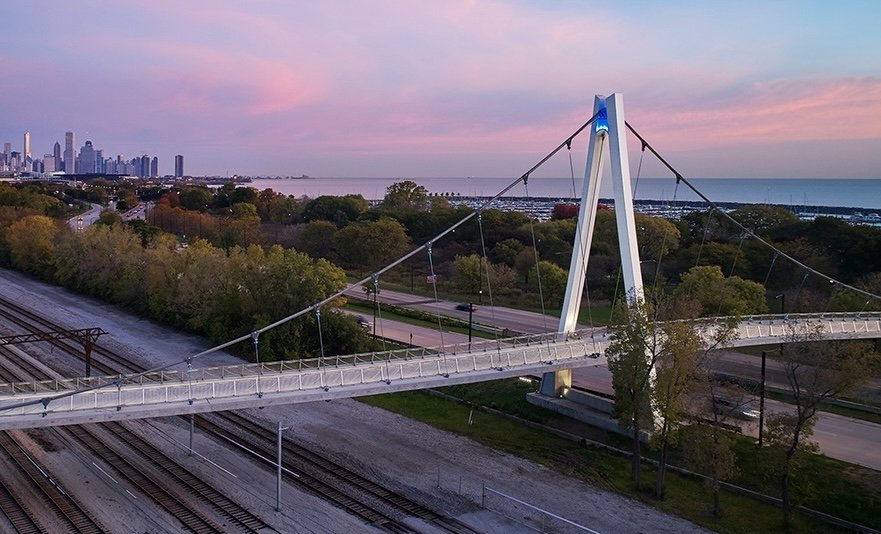
35th St Pedestrian Bridge
Chicago, IL
Chicago is a great city, not least because of its network of parks along the Lake Michigan shore. All are accessible from nearby neighborhoods via bridges and underpasses crossing Lake Shore Drive and its parallel rail tracks. Since 2003 four obsolete crossings have been replaced through an international design competition sponsored by the city and the Chicago Architecture Foundation. The 35th Street Bridge is one of those four.
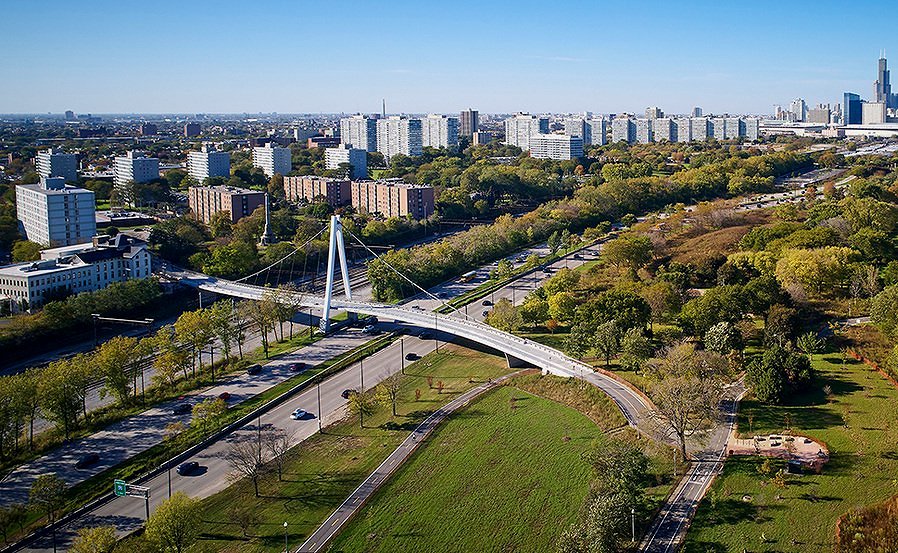
The bridge crosses Lake Shore Drive on reversed curves that compel you to focus on the panoramic views of Lake Michigan and the Chicago skyline. As you proceed move along curves on your way across the bridge your eyes naturally sweep across the scene, compelling you to focus in turn on all of the features of the visual field. How fine that is when the visual field in one direction is the shore of Lake Michigan and, in the other direction, the Chicago skyline.
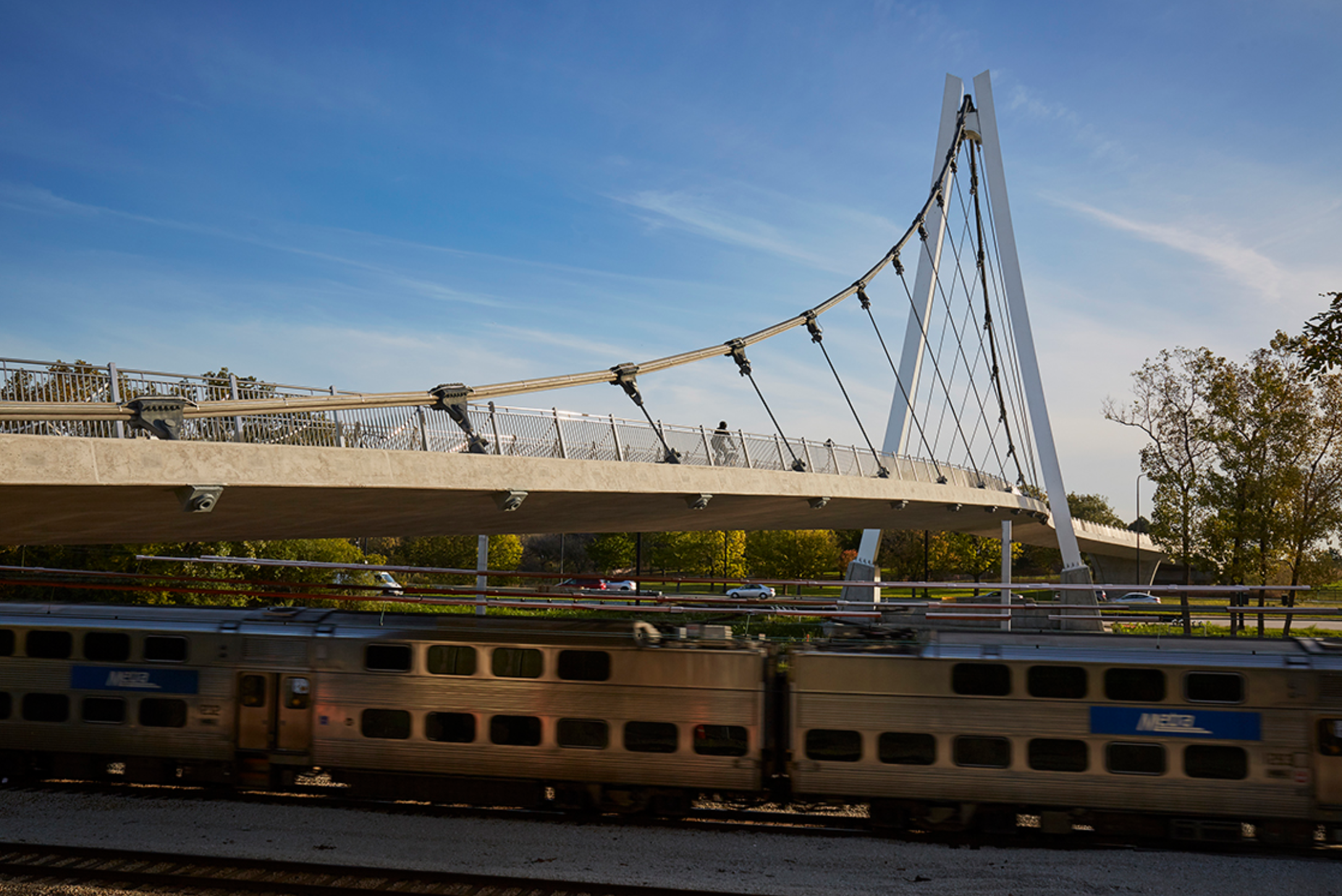
This bridge’s hanger arrangement, done primarily for structural reasons (below), supports the deck first on one side of the bridge, then on the other, further directing your concentration. When the hangers are seen together as you look along the bridge, they form a curved plane along the outsides of the curves, which encourages you to concentrate in the opposite direction, on whatever can be seen looking across the inside of the curve. Thus, the hangar system subtly switches your focus from the beaches to the skyline, and back again.

The structural system of the bridge exploits the classical principles of a self-anchored suspension bridge. The pull of the cables is absorbed by anchoring the cables into the ends of the bridge deck. The deck itself resists the cable force. But this bridge goes a step farther. To offset the twisting that occurs with curved beams, on each span the single suspension cable supports only the outside of the curved decks. The result is a completely self-balancing structural system.
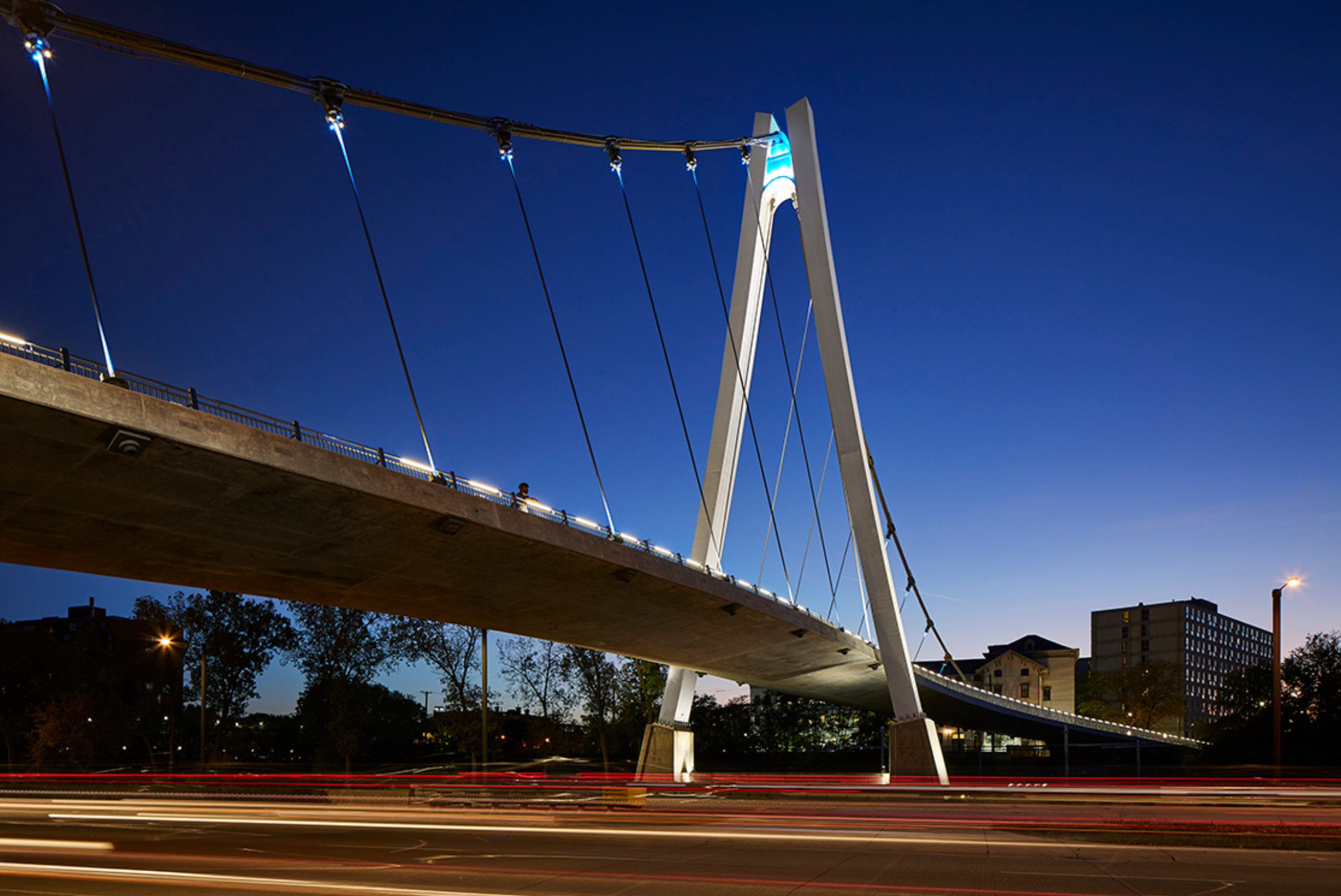
To travelers along Lake Shore Drive or users in the park the bridge deck seems impossibly thin. The sloped soffits of the deck’s triangular cross section make it impossible to judge the depth of the cross section at the section’s apex. Observers have no alternative but to judge the thickness of the bridge by the depth of the much thinner aerodynamic edge. To them the bridge seems even thinner, and thus lighter, than it really is.
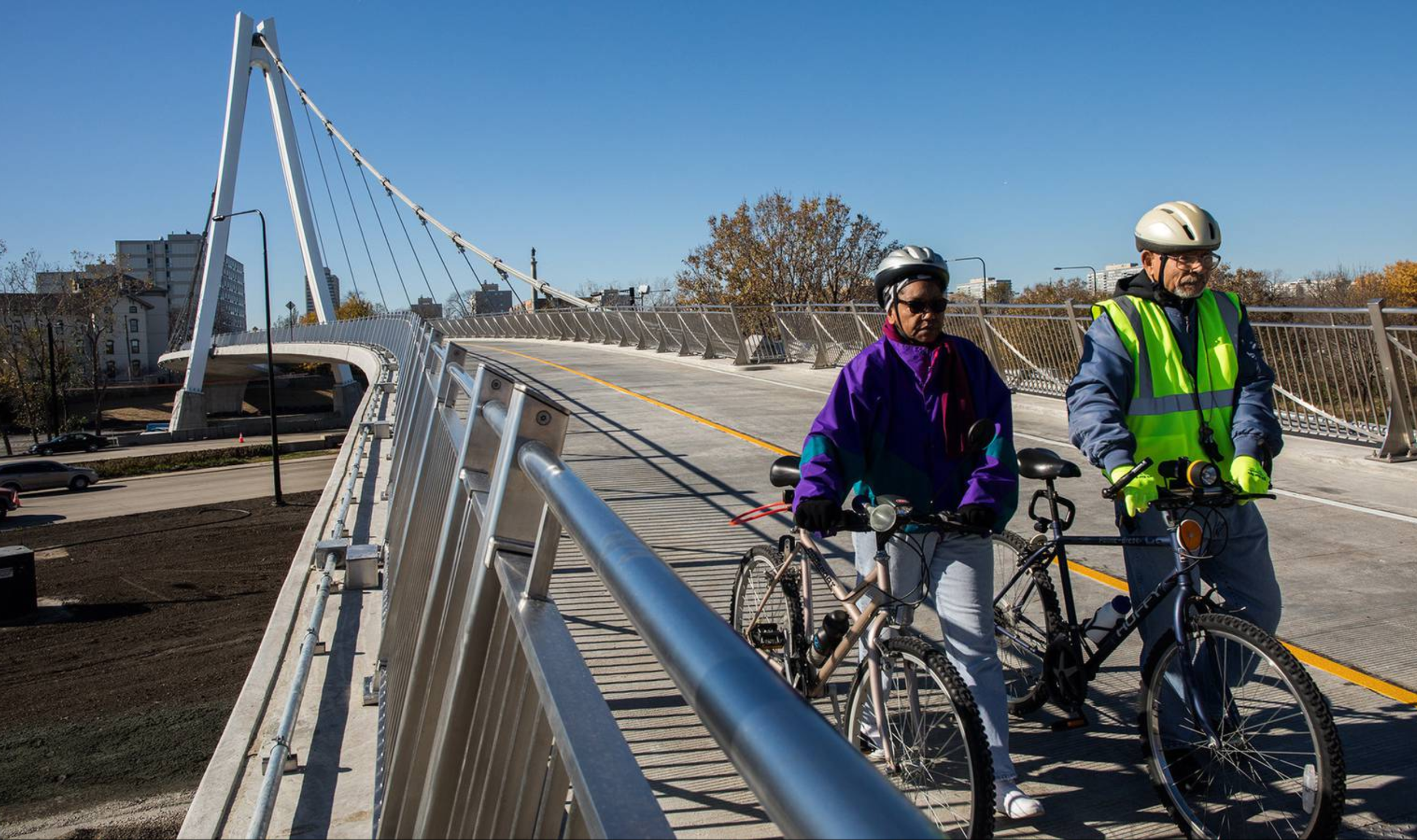
The angles of the tower legs, the hangers, the aerodynamic edges, the angles of the piers and the abutment walls, even the stanchions of the railings, are all sloped in the same direction and at similar angles. The curve of the tower legs emulates the curves of the suspension cables. Each part seems perfect for this bridge and would look out of place on another.

The nighttime lighting of the structural members is subtle, just enough to bring out their shapes. By contrast, the lighting of the bridge deck is bright enough to provide safety and a sense of security. However, the sources of the deck lighting are at handrail height or below, which helps to minimize the lighting’s interference with the night vision of bridge users. They can continue to enjoy the distant views even at night.
